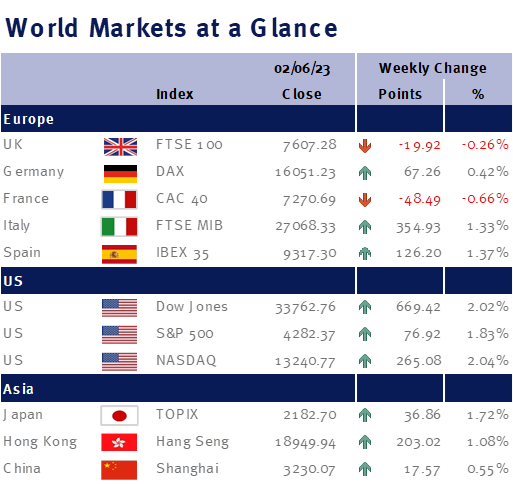This week has seen an important development in China’s economic recovery in the form of a basket of new measures to boost the country’s economic growth. Beijing is set to extend EV tax breaks and possibly ease property rules going forwards, suggesting that potential interest rate cuts are off the table for now. The announcement comes as a welcome calm to investor sentiment, having seen China face a recent property sector downturn and consequences from president Xi Jinping’s zero-Covid policies, which has since dampened the region’s economic growth. China’s stimulus packages will target specific sectors of the economy such as manufacturing and property in order to boost consumption and promote consumer confidence.
Investors also rejoiced this week as President Biden signed a bill that suspended the US $31.4 trillion debt ceiling and prevented what would otherwise have been a default on US’ debts, with only two days to spare. Both President Biden and House of Representatives Speaker, Kevin McCarthy, were able to reach an agreement this week that was characterised by Biden as ‘not what everyone wanted, but what the American people needed’ after months of tense negotiations.


